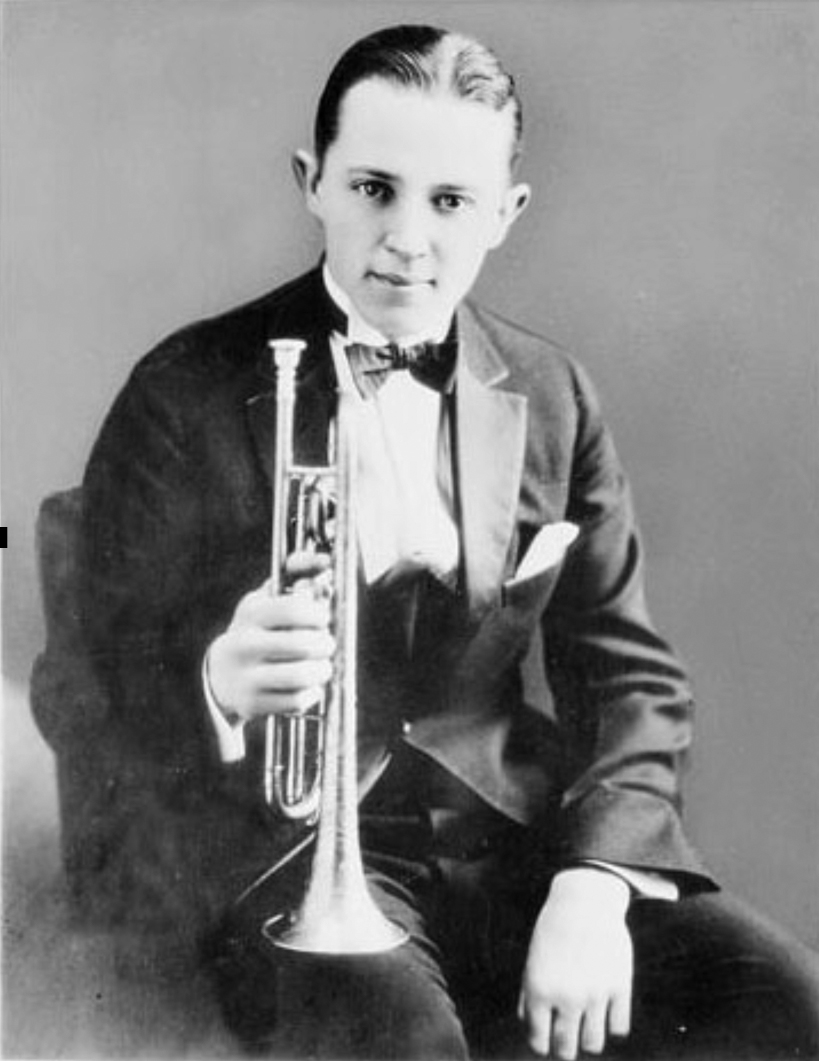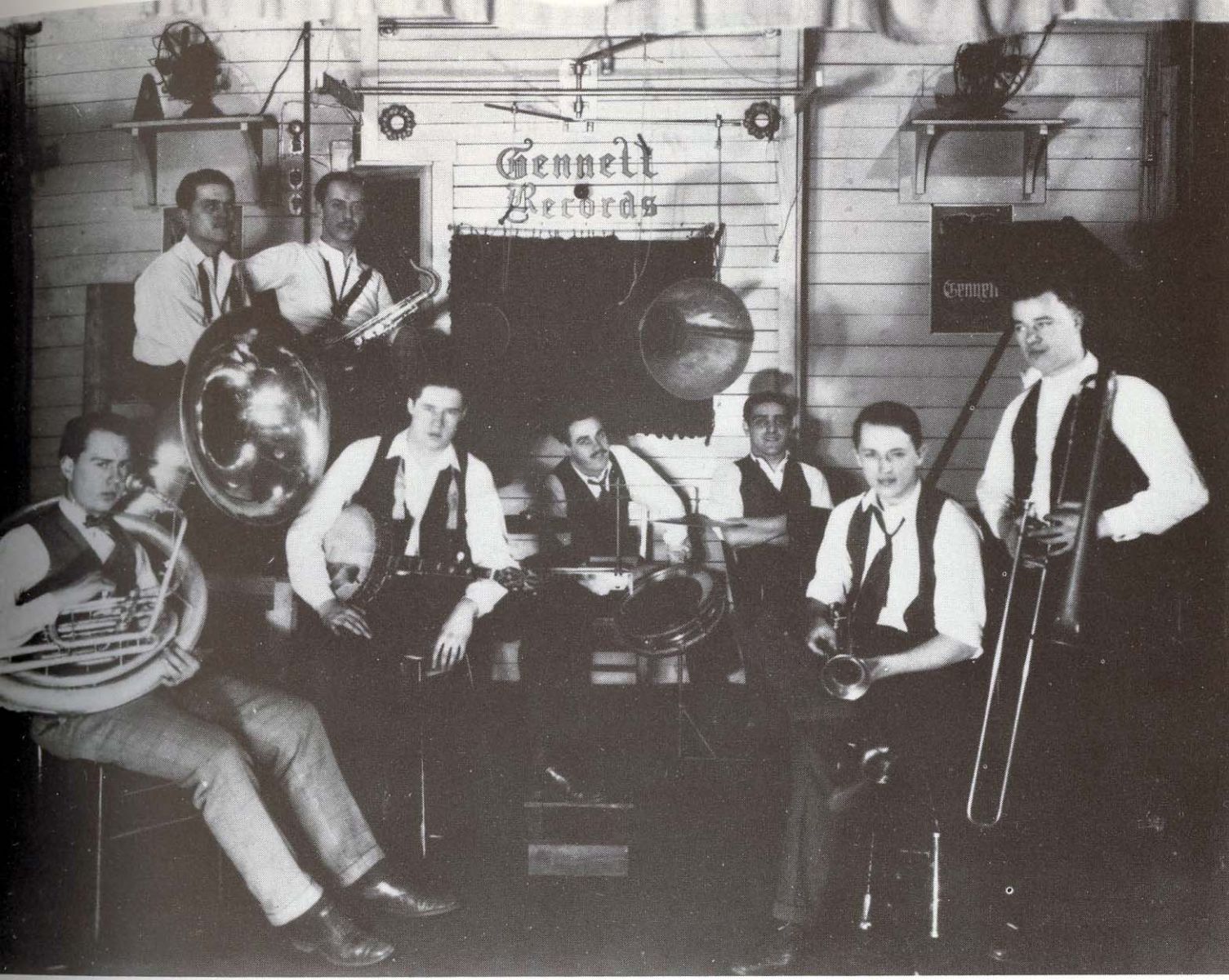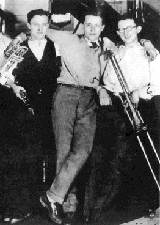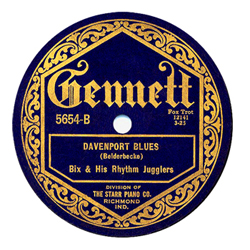
Bix Beiderbecke photo in public domain.
In the early 1920s, a shy genius from Davenport, Iowa set the music world on its ear with his pure jazz cornet style and inventive compositions. Bix Beiderbecke embodied the spirit of the Jazz Age. His combination of a unique talent and a tragically short life won Bix a place in the pantheon of jazz mythology.
Louis Armstrong echoed the thoughts of a generation when he wrote in his autobiography My Life in New Orleans, “Every musician in the world knew and admired Bix. We all respected him as if he had been a god.” Beiderbecke is a great hero to bandleader Jim Cullum. The first time Jim heard Bix’ records as a teenager, Beiderbecke’s playing simply blew him away. Jim memorized Bix solos by whistling them because he did not have a horn. Jim fondly recalls his father’s musician friends listening and re-listening to Bix solos on their old 78s, over and over, until he could see deep grooves in the shellac each time Bix took a solo.
Bix Beiderbecke was born in 1903. The child of a prosperous, middle-class family of German descent, Bix showed a prodigious talent for picking out melodies by ear on the piano when he was little more than a toddler. He heard his first jazz by way of 78-RPM discs of the Original Dixieland Jass Band brought home by his older brother. At that time, the ODJB was a smash-hit novelty band from New Orleans.
Only a few years older than Bix, Louis Armstrong said he first met the young Beiderbecke on one of his many trips aboard the Mississippi riverboats that regularly called on Davenport from New Orleans. Later, both Bix and Louis avowed that the other was “the best horn player he had ever heard.”
On our radio show this week, The Jim Cullum Jazz Band celebrates the freewheeling, ‘anything goes’ spirit of Bix' boundless creative energy as captured on recordings during his short, seven-year career. The tunes featured on our program derive from various periods of Bix' musical legacy, including a sampling of his reflective, Impressionist piano compositions, "In a Mist" and "In the Dark," performed by pianist John Sheridan.

Bix and the Wolverines, photo in public domain.
Bix made his 1924 recording debut with an eight-piece band, The Wolverine Orchestra. Their models were the Original Dixieland Jass Band and the New Orleans Rhythm Kings. Typical Wolverines live performances featured solos followed by multiple choruses in which all the instruments improvised at the same time, each chorus hotter than the last. These extended hot sessions could never be captured on recordings due to the typical 3-minute playing-time limit of 78-rpm discs. The Wolverines were one of the first bands to benefit from Bix’ powerful influence. Young players in the early 20s, The Wolverines hung around Indiana University in Bloomington playing frat house parties and college dances before Bix lifted them up to wider renown.
The genius of Bix Beiderbecke’s cornet playing was—and still is—revered by musicians. According to the Oxford Companion to Jazz: "Where Armstrong's playing was bravura, regularly optimistic, and openly emotional, Beiderbecke's contained a range of intellectual alternatives. Where Armstrong, at the head of an ensemble, played it hard, straight and true, Beiderbecke, like a shadow-boxer, invented his own way of phrasing 'around the lead.' Where Armstrong's superior strength delighted in the sheer power of what a cornet could produce, Beiderbecke's cool approach invited rather than commanded you to listen."
Jim Cullum has cited Bix’s playing for its ‘warm tone’ and his knack for ‘picking out the prettiest notes in the middle register.’ He notes that when Bix played, he fired up the whole band; he drove the band and made the individual players perform better than ever.

The Paul Whiteman Orchestra, photo in public domain.
An even larger, mainstream audience came to know Bix Beiderbecke’s work during the years he spent as a hot cornet soloist with the Paul Whiteman Orchestra, the most popular music act of the 1920s. Bix toured nationally with Whiteman, on and off until 1929, when his poor health forced him to quit. He died in New York in 1931 and is buried in Davenport, Iowa.

Bix and His Rhythm Jugglers. Courtesy of Bixography.com.
At the height of his fame with Whiteman, Bix found time to record with the small groups he loved, mostly in New York City during breaks in the busy Whiteman touring schedule. These small-band recordings—highly regarded today by jazz historians and collectors—can be found in CD collections under the names Bix and His Gang, Bix and His Rhythm Jugglers, and Bix Beiderbecke and His Orchestra.
Even as a boy, Bix made headlines with his music. When he was five, Bix could play the piano by ear. When he was seven, the Davenport Democrat ran a feature article dubbing him the ‘boy musical wonder.’ The paper wrote that when Bix played the piano he never looked at the keys; his eyes gazed into space; his mind absorbed in the music and the melody.
One day, Bix borrowed a dented cornet from a friend down the street and was hooked. He sat in the family parlor and taught himself how to play by listening to the jazz records his older brother had brought home. By the time Bix was 17, it was 1920. Things were changing — the Jazz Age began to sizzle.
The strains of New Orleans music from the riverboats plying the Mississippi River could be heard from the Beiderbecke’s front porch. Bix loved it and when he was 18, he got his first job playing on a riverboat. He was so obsessed with music he did not do well in school. This disappointed his parents and in 1921 they shipped him off to Lake Forrest Academy near Chicago, away from the temptation to play jazz.

1925 Gennett Recording, Davenport Blues. Courtesy of Bixography.com.
Little did they know the Academy was just a short train ride into a hot bed of jazz in the Chicago Loop. Bix couldn’t resist and would sneak out of his dorm and into the city; finally he was expelled. Then, Bix met guitarist Eddie Condon who opened doors for Beiderbecke to be heard by those who could appreciate his musical gift.
Bix Beiderbecke’s brilliant musical career lasted for only seven years, and he died of alcohol-related pneumonia at age 28. It seems he never received the acceptance from his family he hoped for. As a star soloist with the Wolverines and the orchestras of Jean Goldkette and Paul Whiteman, Beiderbecke helped define hot jazz in the 1920s. Bix is regarded, by many, as one of the most influential jazz musicians of the 20th century. Louis Armstrong once remarked, "Lots of cats tried to play like Bix; ain't none of them play like him yet."
Photo credit for Home Page teaser image: Bix Beiderbecke photo in public domain.
Text based on Riverwalk Jazz script by Margaret Moos Pick ©2012

